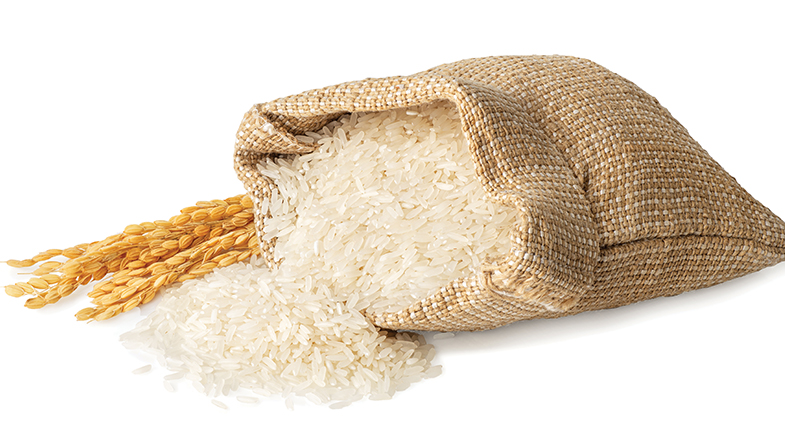Peter Higgs (1929-2024): a classic and classical scientist
-
- from Shaastra :: vol 03 issue 04 :: May 2024

Peter Higgs gave humanity a 'jewel in the crown of knowledge'.
Theoretical physicist and Nobelist Peter Higgs, after whom the boson particle discovered in 2012 was named, passed away on April 8, 2024, aged 94. He had predicted the boson's existence in 1964, and rejoiced in its discovery in his lifetime. With characteristic modesty, however, he pointedly gave credit for its discovery to the team of experimental physicists who hunted down the Higgs boson. To my mind, he epitomised a classic and classical scientist who was absorbed in his science and did not want any more credit for his work than he thought was his due.
Higgs is known for (jointly) inventing the Higgs mechanism of spontaneous symmetry breaking (SSB). Symmetries are mathematical operations that leave the equations of motion of a system the same. Sometimes these symmetries are broken explicitly: for instance, the rotational invariance is broken in the presence of a magnetic field, and the electron spins align themselves with it. However, sometimes the symmetry is broken subtly: the equations of motion are symmetric, but the ground state of the system is not. The classic example is of a ferromagnet, which has domains where the spins are aligned in a specific direction even though the nature of interactions does not force them to pick out a particular spatial direction. This is the SSB: it is the equivalent of having one's cake and eating it too! Higgs showed how it was possible to realise this in a relativistic theory.
Of all the theoretical physicists who studied and understood the Higgs mechanism, Higgs was the only one who explicitly predicted the existence of a spin-zero particle.
The mechanism proposed by Higgs was used later by two other Nobel Laureates, Abdus Salam and Steven Weinberg, to explain how all the elementary particles in the universe acquire a non-zero mass, soon after the birth of the universe in a Big Bang. Other physicists, including François Englert (who won the Nobel Prize along with Higgs), Robert Brout, Gerald Guralnik, C.R. Hagen and Tom Kibble, had also obtained similar results. It is a measure of how fair-minded Higgs was that he wanted the Higgs mechanism to be named after all the physicists who contributed to the idea. However, of all the theoretical physicists who studied and understood the Higgs mechanism, he was the only one who explicitly predicted the existence of a spin-zero particle. Even so, he used to refer to the Higgs boson as the 'scalar boson' or the 'so-called Higgs boson'.
MAKING A MARK
Though Higgs's initial work did not grow out of a desire to achieve electroweak (EW) unification, it was essential to it. The path-breaking work was done in 1964 when he was a lecturer. He came to love Edinburgh during his college days for the hitch-hiking opportunities it offered. Having joined it in 1960, he stayed till the end, and taught till 1996. It is ironic that even though the mechanism of SSB put forward by him turned out to be the capstone of the edifice of the Standard Model of Elementary Particle Physics, he earned his PhD for research on molecules and heat, not on particle physics. In fact, he wanted to do a PhD in particle theory, as his interest in physics had been triggered during his student days from reading about the work of the Nobelist co-alumnus of his school in Bristol, Sir Paul Dirac. However, he was advised against it by his PhD supervisor at King's College London, theoretical chemist Charles Coulson, who told him that it was very difficult to make an impact in that field. Higgs returned to his first love after arriving at Edinburgh as a lecturer – and an impact he did make!
Higgs was drawn to a problem that was posed to theoretical physicists trying to understand the behaviour of strong interactions involving particles like protons, neutrons and pions. Japanese-American physicist Yoichiro Nambu was trying to formulate a theory of strong interactions, using SSB, taking a clue from the Bardeen-Cooper-Schrieffer (BCS) theory of superconductivity. A theorem by Jeffrey Goldstone seemed to toll the death knell of this idea, since a massless boson – which he said must exist in such theories – was not observed in nature. Theoretical condensed matter physicist Philip W. Anderson had demonstrated that the theoretical description of superconductivity, which also involves SSB, evades this problem. Higgs analysed the situation for relativistic theories and showed how electromagnetic interactions of the scalar save the day here, too.
He wrote this first paper virtually over a weekend; this was proof of principle. In the second paper, he followed it up with an explicit example of the SSB of a theory involving a scalar field interacting with an electromagnetic field. The journal Physics Letters rejected the paper, and in order to rescue it, Higgs added a paragraph with his prediction of a massive boson in this theory, and sent it to Physical Review Letters, which published it. In other words, we have an unknown referee to thank for Higgs's explicit prediction of the eponymous boson in his paper.
This story not only exemplifies the zigzag nature of the progress of science, but also shows the crucial role played by cross-germination of ideas in different fields of physics. Now, the story has come full circle: many exciting and fundamental concepts in particle physics are useful in describing the behaviour of many specially engineered condensed matter systems and are opening up avenues to explore these ideas further.
THE BOSON BUZZ
In 1964, the subject of SSB may have seemed like a bit of a scientific backwater, but the successful application of the idea to develop the unified description of the EW interactions in 1967, and its experimental verification beginning in 1974, gave rise to an intense interest in the Higgs mechanism and the associated boson. It dominated the horizons of the explorations in particle physics for decades. In fact, I began my graduate studies in 1974, and I belong to a generation of theoretical physicists who are the children of those gauge theory days. My own second paper had considered production of a Higgs boson in neutrino-scattering experiments at the Fermi National Accelerator Laboratory (Fermilab). Many more papers involving the Higgs boson followed.

Intense efforts by generations of theoretical and experimental particle physicists the world over at the giant particle colliders finally led in 2012 to the discovery of the Higgs boson at the Large Hadron Collider (LHC) by the CMS and ATLAS experiments. Even today, Higgs factories dominate the discussions not just of the European Strategy for Particle Physics but the world over. Particle physicists feel that this unique particle will be able to offer us a peek into solutions to the unsolved puzzles of how things work at the heart of matter.
Particle physicists feel that the Higgs boson particle will be able to offer a peek into solutions to unsolved puzzles.
As for Higgs, so happy was he at The University of Edinburgh that he stayed there all his life; he was much more involved with teaching than with research. He told the BBC that his lack of productivity would probably have got him fired long ago were it not known that he had been nominated for a Nobel Prize, which he received in 2013. Away from work, he was socially conscious and participated in anti-nuclear movements. He was fond of music and was essentially a shy person, uncomfortable with public attention – to the point where, on the day the Nobel Prize was to be announced, he went out for lunch so as not to be reachable.
In addition to my own life-long involvement with Higgs physics, I had another connection. My PhD supervisor, Jack Smith, was Higgs's student at The University of Edinburgh. Although Jack did not do his PhD thesis with Higgs, they were close. Higgs invited Jack for the Nobel Prize ceremony. As Jack noted, Higgs came through as a no-nonsense, simple person.
All those who treasure humanity's exploration into the mysteries of nature will forever be indebted to Peter Higgs for having provided a 'jewel in the crown of knowledge'.
Prof Rohini Godbole is INSA senior scientist at the Indian Institute of Science, Bengaluru. Earlier, she served as Honorary Professor at the Centre for High Energy Physics at the institute.
Have a
story idea?
Tell us.
Do you have a recent research paper or an idea for a science/technology-themed article that you'd like to tell us about?
GET IN TOUCH














